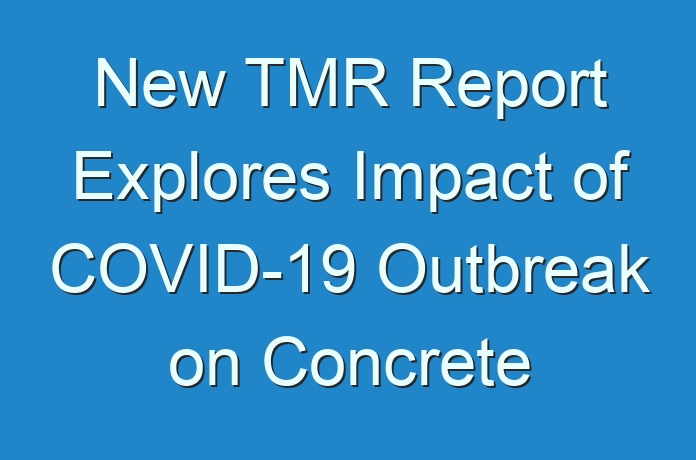
A concrete breaker is a powerful striking tool (hammer) joined to an excavator to demolish rocks or concrete structures. It is the machine designed to break or knock down a rigid structure. An auxiliary hydraulic system from the excavator is used for the operation of the concrete breaker. Additionally, concrete breakers are manufactured for demolition jobs, where the job is too heavy for the areas or jackhammer where blasting is not safe due to environmental issues. Concrete breaker, among construction/demolition workers is commonly known as pecker, hammer, hoe rammer, or hoe ram. Hydraulic drives are used as the primary source of motion in some equipment. Perfect hydraulic flow through engine speed for the concrete breaker is provided by the hydraulic system attached to the machine. Thus, the system ensures hydraulic power needed during the breaking and demolition process. Key players operating in the concrete breaker market are focusing on adding innovative equipment to their product portfolio. The upgraded concrete breaker is designed to cater to the practical working surroundings and needs of industry sites. Development of technology has enabled tunneling and drilling to be carried out at critical areas. Various types of concrete breakers are available in the market; however, choosing the right type of concrete breaker is imperative. Parameters for selecting a concrete breaker include material, complexity of the project, quality, cost, safety, and time.
The global concrete breaker market is anticipated to expand at a rapid pace during the forecast period. The demand for concrete breakers is anticipated to grow due an increase in infrastructural development, such as residential & non-residential buildings, bridges & tunnels, mining, and roads. Concrete breakers have wide applications such as for concrete breaking & recycling, slag breaking, scaling & tunnel excavation, rock breaking, underwater applications, sidewalk & curb construction, commercial/selective demolition, trenching, reducing oversize material, site excavation, and others.
Planning to lay down future strategy? Perfect your plan with our report sample here https://www.transparencymarketresearch.com/sample/sample.php?flag=S&rep_id=56517

Additionally, significant increase in the number of mining projects and development of infrastructure are boosting economic growth by facilitating cross-border trade and industrial growth. This in turn is creating demand for concrete breakers. Moreover, rise in government?private partnerships for the construction of public infrastructure such as metros or city rail systems in countries such as Japan, India, and China, and increase in government initiatives regarding infrastructure development are propelling the concrete breaker market. High initial capital investment and usage of high-class and expensive materials in the manufacture of equipment may restrain the market. Growth in industrial projects and increase in number of projects that involve concrete breakers such as construction, mining, chemical industry, and repowering of old projects are likely to provide lucrative opportunities to the concrete breaker market during the forecast period. The usage of the recent technology of dismantling tunnels and advancements in the tunneling process are projected to create opportunities in the near future.
The concrete breaker market can be segmented based on type, application, and region. Based on type, the concrete breaker market can be divided into pneumatic breakers, hydraulic breakers, and petrol breakers. In terms of application, the concrete breaker market can be segregated into construction industry, mining, metallurgy, chemical industry, railway projects, and others. In terms of region, the concrete breaker market can be divided into Europe, North America, Asia Pacific, Middle East & Africa, and South America. The concrete breaker market in North America can be classified into the U.S., Mexico, and Rest of North America. Asia Pacific can be sub-segmented into Australia, New Zealand, China, India, and the Rest of Asia Pacific, while Europe can be divided into the U.K., Germany, Italy, and Rest of Europe.
Key players operating in the global concrete breaker market are Atlas Copco (Epiroc), JCB, Antigo Construction, Doosan, SKS, Hilti, STANLEY Infrastructure (DEWALT), FURUKAWA, ACE Pneumatics, Tramac, INDECO, Robert Bosch, GISON Machinery, Makita, Toku, and Comet Breaker. Key operating players in the market focus on design and develop smart, fuel- & energy-efficient machinery, thus accelerating the market growth. Furthermore, companies focus on launching quality and efficient products to retain their customer base.
The report offers a comprehensive evaluation of the market. It does so via in-depth qualitative insights, historical data, and verifiable projections about market size. The projections featured in the report have been derived using proven research methodologies and assumptions. By doing so, the research report serves as a repository of analysis and information for every facet of the market, including but not limited to: Regional markets, technology, types, and applications.
Looking for exclusive market insights from business experts? Request a Custom Report here https://www.transparencymarketresearch.com/sample/sample.php?flag=CR&rep_id=56517
The study is a source of reliable data on:
- Market segments and sub-segments
- Market trends and dynamics
- Supply and demand
- Market size
- Current trends/opportunities/challenges
- Competitive landscape
- Technological breakthroughs
- Value chain and stakeholder analysis
The regional analysis covers:
- North America (U.S. and Canada)
- Latin America (Mexico, Brazil, Peru, Chile, and others)
- Western Europe (Germany, U.K., France, Spain, Italy, Nordic countries, Belgium, Netherlands, and Luxembourg)
- Eastern Europe (Poland and Russia)
- Asia Pacific (China, India, Japan, ASEAN, Australia, and New Zealand)
- Middle East and Africa (GCC, Southern Africa, and North Africa)
The report has been compiled through extensive primary research (through interviews, surveys, and observations of seasoned analysts) and secondary research (which entails reputable paid sources, trade journals, and industry body databases). The report also features a complete qualitative and quantitative assessment by analyzing data gathered from industry analysts and market participants across key points in the industry’s value chain.
A separate analysis of prevailing trends in the parent market, macro- and micro-economic indicators, and regulations and mandates is included under the purview of the study. By doing so, the report projects the attractiveness of each major segment over the forecast period.





